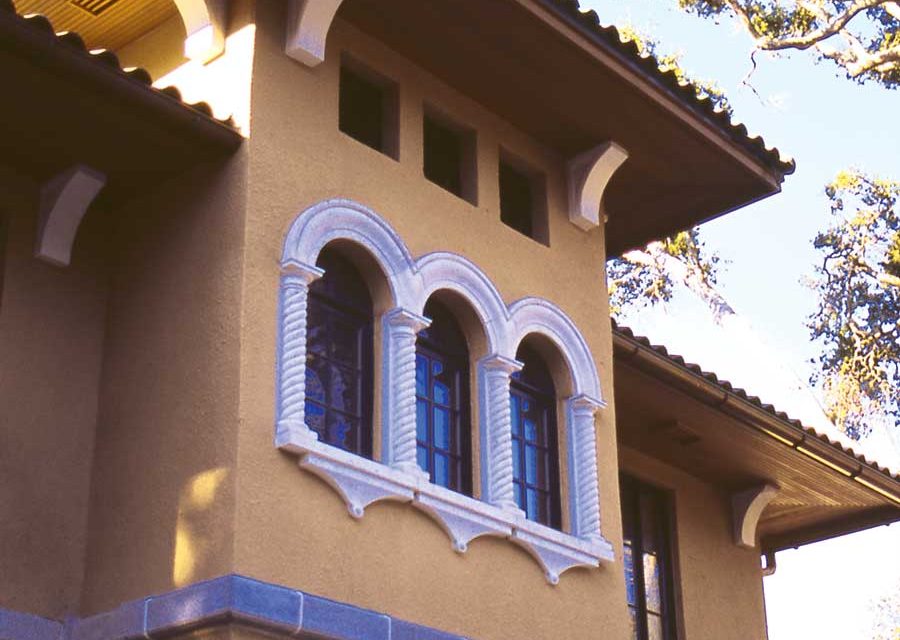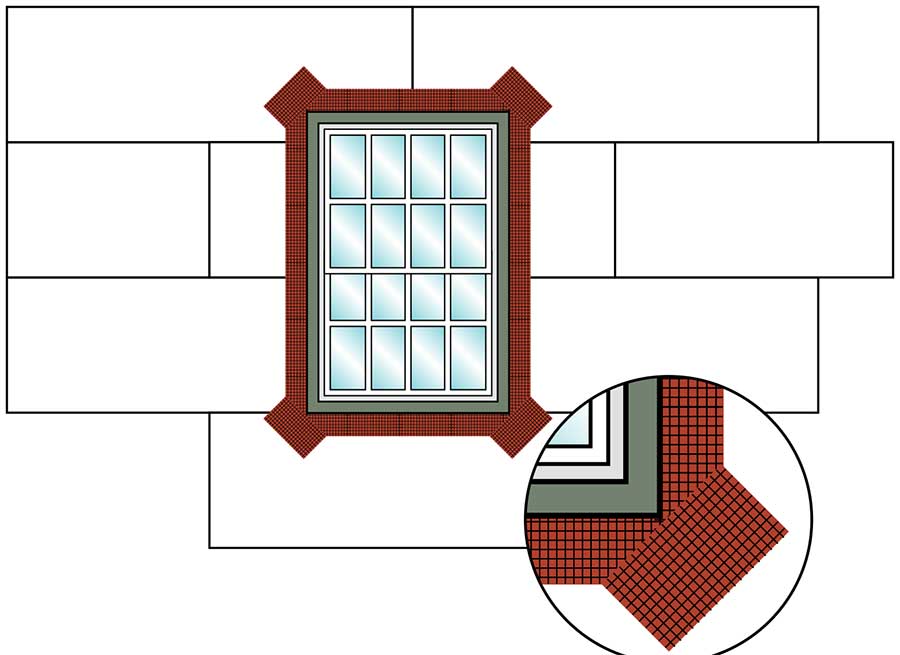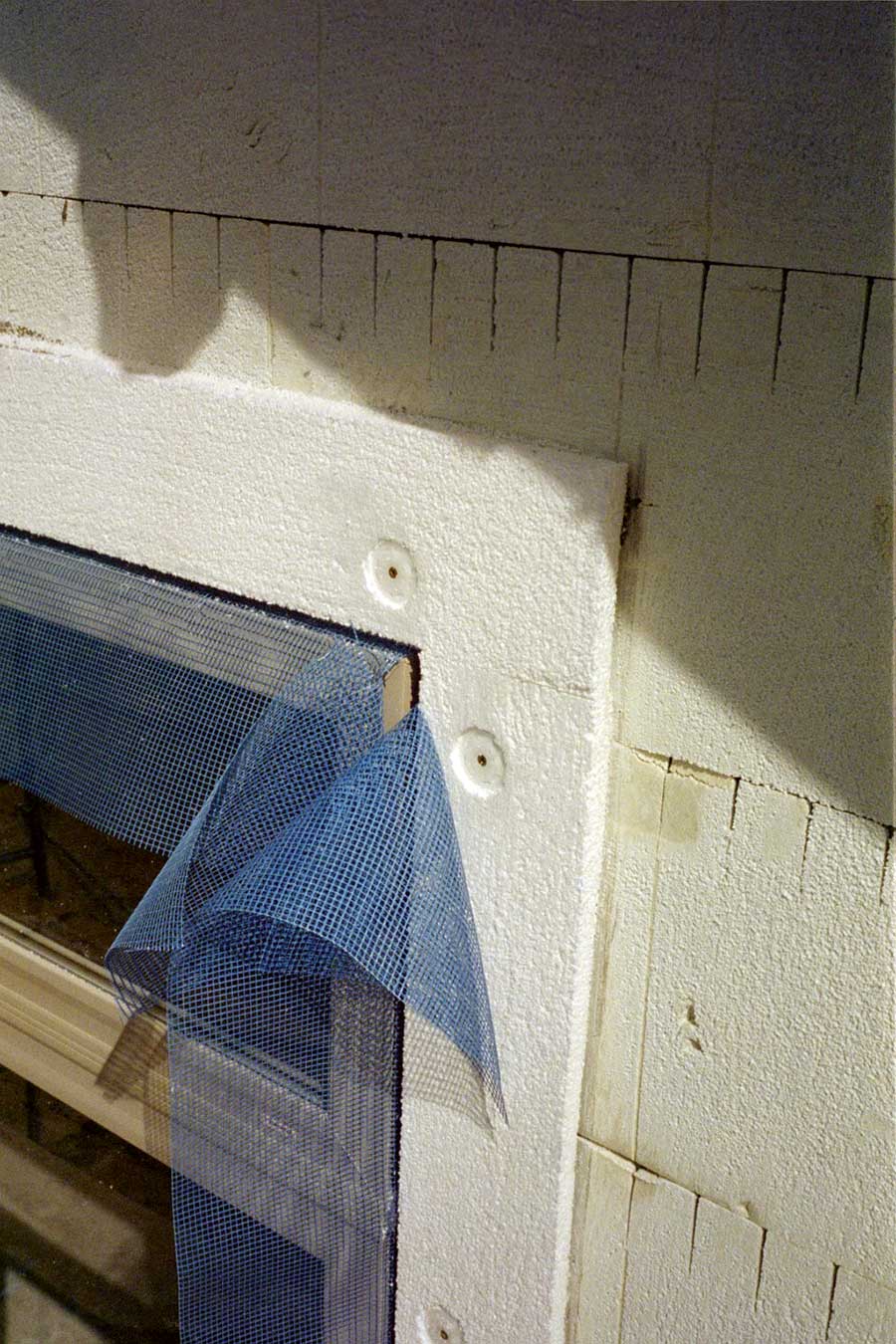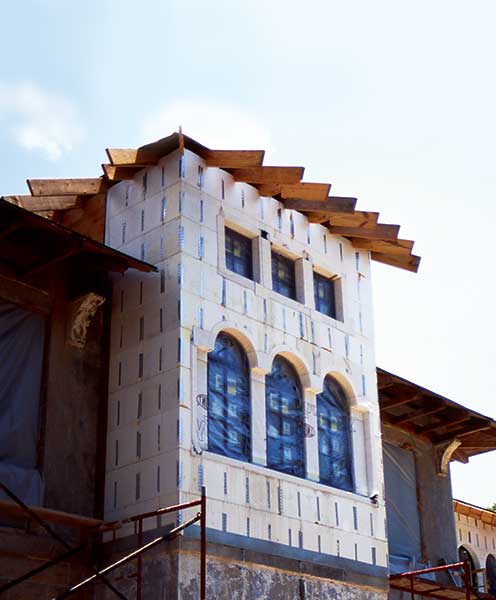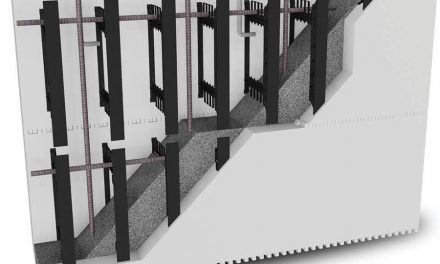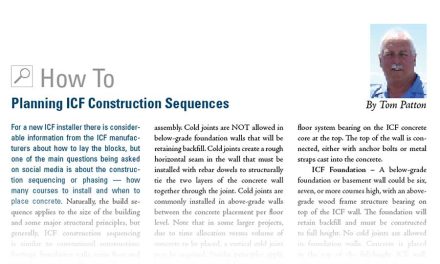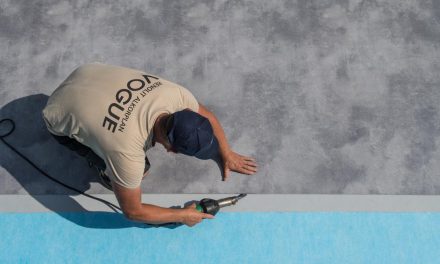Textured Acrylic Surfacing Systems (TASS) are perhaps the most popular exterior finish for ICF construction.
They are easy to apply, relatively inexpensive, and available in a wide range of colors and textures. But getting the details right—especially around windows and doors—can present challenges in the field.
TASS are often incorrectly called “stucco,” or “EIFS” (Exterior Insulation Systems), but there are significant differences between these systems. True stucco is a mixture of cement, sand, and lime, and must be applied over metal lath. It is quite thick—3/8” to ¾” is common—and is much less flexible that TASS.
EIFS more closely resembles TASS, since both are applied over Expanded Polystyrene (EPS) foam. However, on EIFS walls, the EPS is non-structural and non-load-bearing. Additionally, EIFS walls often contain moisture-sensitive components, such as wood studs and sheathing, which can create problems when cracking occurs.
EIFS has endured an undeserved bad reputation, ever since a 1995 study of 100 homes with EIFS in Wilmington, North Carolina found that a significant portion had moisture damage.
This same study found that nearly half of all moisture-related problems could be traced to improperly detailed windows. ICFs, of course, have a negligible sensitivity to moisture, but that doesn’t mean it’s not important to detail windows correctly. For instance, nearly all visible cracking in acrylic finishes can be traced to poor detailing. The key to avoiding cracks and the problems they can create, is to ensure that your windows and doors are detailed correctly.
Structural Stress
Cracks are caused by a number of factors; most can be traced to structural or thermal stress.
Differential settling is a common cause of structural stress. One part of the building settles faster than another—like one end of the foundation, or one side of the window header. The resulting stress will cause cracking at the weakest part of the wall, which is usually a window or door opening.
Cracks that run vaguely perpendicular to the opening are almost always caused by structural stress.
One solution, says Kent Stumpe, director of brand strategy and communications at Degussa Wall Systems, is to use extra mesh. In addition to the regular trim mesh used around the windows, place an extra piece over each corner at a 45° angle.
“Window corners are an area of stress and movement,” says Stumpe. “Without the double reinforcement, cracking is likely.”
Thermal Stress
All objects expand when heated and shrink as they cool—driveways and sidewalks have expansion joints to accommodate this movement. The problem is that every material moves differently as the temperature changes, so when TASS are applied over two different materials, this movement is powerful enough to crack the exterior finish.
“Vinyl or wood will expand or contract considerably,” says Dean Seibert, of Wind-Lock. “But the coefficient of expansion for EPS is almost zero. So if you apply your finish over dissimilar substrates, cracking is going to occur.”
Bruce Anderson, general manager for Vinyl Technologies, which makes the Vbuck, agrees. “It’s not a Vbuck issue,” he says. “It’s a dissimilar materials issue.”
Incidentally, thermal cracking can occur anytime TASS is applied over dissimilar materials, such as on ICF blocks with exposed ties. The plastic tie will move more than the surrounding foam and eventually cause the finish to crack. It can also occur in areas where local building codes require a “concrete inspection strip” on the exterior wall 6” to 8” above grade. The concrete moves, the foam doesn’t.
Fortunately, an easy solution exists that looks good and is fairly foolproof.
“The easiest solution is to install aesthetic bands around the window,” says Derick Wiaderski, senior staff architect at Dryvit Systems. “By installing EPS trim around openings, you’re covering the dissimilar materials, which will keep the finish from cracking,” he says.
This trim around windows and doors is extremely popular in most areas, and is the only guaranteed way to avoid cracking due to thermal resistance.
The “pop-out” or trim pieces are attached to the ICF blocks with specialized screws. Wind-Lock’s “Wind Devils” are by far the most popular. They come in a variety of lengths with large, 2”- diameter nylon baskets near the head to hold the foam in place.
“It’s crucial that the heads of the fasteners are beneath the surface of the foam,” says Seibert. “TASS and EIFS coating are resilient, and if the fasteners aren’t recessed, you’re going to have cracking.
Difficult Applications
If your building plan or architect requires the TASS finish to extend flush to the window flange, detailing just got a lot more complicated. Sometimes called the “New Mexico,” “Spanish Colonial” or “modern” style, this look presents numerous challenges.
The problem, of course, is that it will probably involve bridging dissimilar sub-strates, which will inevitably create cracks.
Anderson calls it “one of the last unsolved challenges of ICF construction.”
“It really is a very difficult problem,” he says. “When homeowners want a nice smooth finish on the ICFs, we can’t warranty it, because there are two dissimilar systems—wood or vinyl. Have there been any installations? Yes, it happens all the time. But it invalidates the warranty because it will crack.”
Option 1: One solution is to use
an ICF brand that offers EPS endcaps and lintels, such as Smartblock, Greenblock, or IntegraSpec. By forming the openings with foam, the dissimilar materials issue disappears.
Option 2: Other solutions also exist. Wind-Lock, Dow, and others sell a butyl-based, cloth-backed tape that claims to reduce cracking, although none will guarantee it. “We always caution buyers about the aesthetic cracking,” says Seibert.
Called transition wrap, the tape is applied over the dissimilar materials to help absorb some of the movement. “The tape has a high modulus of elasticity,” Seibert says. It stretches to three times its thickness.
“What you’re trying to do is to get it to move all at once. And when there’s a hairline crack, it prevents the water from migrating into the building around the window,”
he says.
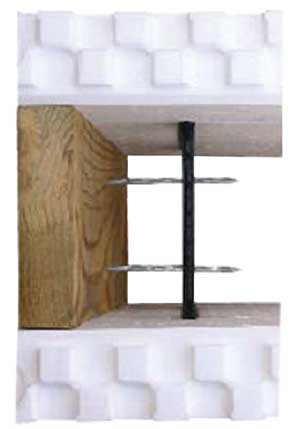
window buck.
David Bowen, supervisor, in-house technical services at Degussa Wall Systems, says, “Our standard recommendation is a flange. There are questions about the long-term adhesion of transition wraps. We haven’t tested it, so I can’t verify or deny. I just don’t see it lasting long term.”
Bowen admits that there will be some movement between the EPS and the window flange, which can be reduced by installing a foam band between the window and the buck.
Anderson, at Vinyl Technologies, cautions that internal bucks may allow termites to tunnel into the structure, since the finished window bridges the gap from exterior foam to interior finishes.
Option 4: A final suggestion is to use an acrylic finish that adheres well to the buck material and is flexible enough to absorb the movement. At least two such products are on the market. Grailcoat is a genuine concrete coating that offers an incredible degree of flexibility and adhesion. “A lot of products don’t stick well to vinyl, says Mike Meierer, technical director at Grailcoat, “but our product adheres better, and can go right to the flange. Our combination of different sizes of aggregates allows it to fit tighter together, and the polymer gives it the flexibility.”
GreenTech, maker of TruWall finishes, also claims to be able to bridge dissimilar substrates without problems. “If you want the finish to be flush—a modern or simpler look—you can apply TruWall without any problems,” says Shawn Kashou, lead architect at GreenTech. “We recommend applying the finish before installing the window, and installing wire mesh in the corners of the openings to reinforce. Installed correctly, the product has experienced no cracking.”
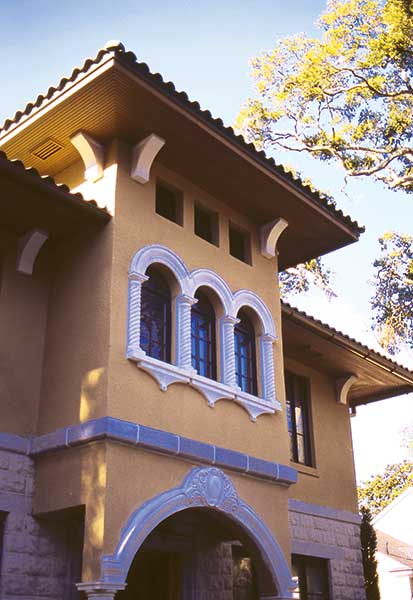
These before-and-after photos show how foam was used to detail the complex window openings of this colonial-style home.
Wiaderski, the staff architect at Dryvit, cautions that manufacturer warranties typically don’t cover cracking. “The thing you have to realize is that the warranty is on the finish. The form manufacturer is responsible for the warranty on cracks.”
Bowen, at Degussa, points out that it’s possible that even if the lamina does crack, the damage may only be aesthetic. “With ICFs and moisture issues, it’s a whole different ball game because the wall components are not as moisture sensitive as they are with stick frame.”
Just one more reason ICFs are a better building technology.

